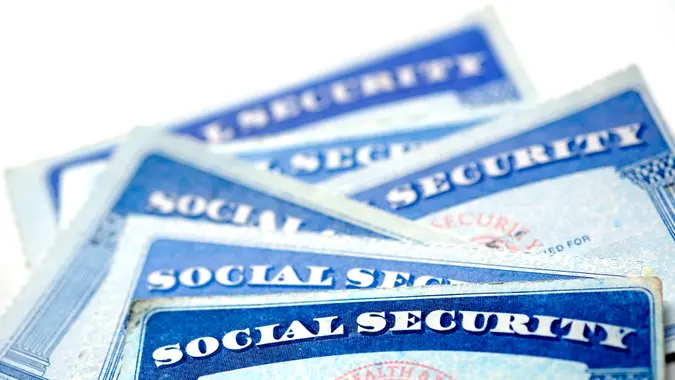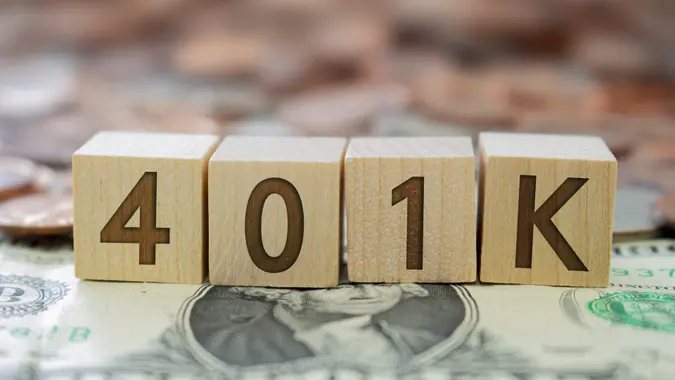401(k) Matching: What It Is and How It Works

Commitment to Our Readers
GOBankingRates' editorial team is committed to bringing you unbiased reviews and information. We use data-driven methodologies to evaluate financial products and services - our reviews and ratings are not influenced by advertisers. You can read more about our editorial guidelines and our products and services review methodology.

20 Years
Helping You Live Richer

Reviewed
by Experts

Trusted by
Millions of Readers
It’s never too early or too late to start saving for retirement, and a 401(k) plan is a great way to do it. But only 58% of eligible employees participate in their plans, according to the Bank of America 2022 Financial Life Benefits Impact Report. Not only are the other 42% missing an excellent opportunity to build a hefty nest egg, but they’re also leaving free money on the table.
Read: 3 Ways to Recession Proof Your Retirement
A unique feature of 401(k)s could let you substantially boost your savings without paying more. Keep reading to find out how employer 401(k) matching can infuse your account with free money.
What Is 401(k) Matching and How Does It Work?
Imagine that for every dollar you contribute to your 401(k), your employer contributes some of its own money to your account. That’s an employer match, and it’s why you should sock away as much as you can in your 401(k). Most 401(k) contributions are tax-deferred, meaning you contribute pretax dollars now and pay tax on the money you withdraw in retirement.
For example, what does 4% matching mean with a 401(k)? In this case, your employer would match a percentage of every dollar you contribute, up to a limit of 4% of your total salary. The percentage of every dollar that your employer will match will depend on their specific company policy.
Automatic Enrollment
Some employers use automatic enrollment to give employees the push they need to start saving. “This is really a pro to everyone involved,” said Ryan R. Neff, a qualified 401(k) plan administrator and president of Life, Inc. Retirement Services in Columbus, Ohio. “Most employees know they need to save for retirement but can find the process of choosing how much to defer and what to invest in intimidating. This takes away the deer-in-headlights effect that causes employees to fail to save.”
But automatic enrollment can have pitfalls. If it catches you off guard, you might defer money you can’t afford to contribute. Alternatively, you can wind up contributing too little.
“Many employers will auto-enroll their employees into the 401(k) plan at a 3% contribution rate and auto-escalate that by 1% each year until a certain cap,” noted Matt Ahrens, chief investment officer and financial advisor at Integrity Advisory in Overland Park, Kansas.
Because automatic enrollment requires no action on your part, you might lose opportunities to increase your contribution by a significant amount — and, in turn, miss out on years’ worth of matching contributions from your employer.
Do All Companies That Offer a 401(k) Option, Match?
No. Whether a company matches contributions depends on the company policy and on the plans it offers. But the fact is, not all companies offer 401(k)s, and many that do only offer them to new employees or impose a waiting period before new employees become eligible. Contact your benefits administrator to learn about the plan your employer offers.
Common 401(k) Matching Formulas
Companies that match employee 401(k) contributions do so according to formulas governed by what the plans and the IRS allow. Most match a percentage of the employee’s contributions, up to a certain limit. For example, the employer might match 100% of the employee’s contributions up to 6% of their salary or $0.50 on the dollar up to a specific maximum, such as 2.5% or 5%.
401(k) Vesting Schedules
Being vested in your 401(k) means you own the money in your account. That ownership is expressed as a percentage of the balance, so being fully vested means 100% of the balance is yours to keep, even if you leave the company you work for. Although you’re always 100% vested in money you’ve deferred, you become vested in your employer’s contributions over time.
Vesting schedules for employer contributions vary, but a common plan is to vest the funds over five years — 20% in year one, 40% in year two, 60% in year three, 80% in year four and 100% in year five.
401(k) Match and Annual Limits
Employees under age 50 may contribute up to $22,500 to their 401(k) in 2023, and employees aged 50 and older can add an extra $7,500 catch-up contribution.
A compensation limit — $330,000 for 2023 — restricts how much your employer can contribute to your account. Say, for example, you earn $350,000 per year and defer 5% of your salary to your 401(k), and your employer matches 100% of your deferrals up to 5% of your compensation. Although 5% of your $350,000 compensation equals $17,500, the compensation limit reduces the eligible amount to 5% of $330,000, or $16,500.
Total 401(k) contributions from all sources can equal up to 100% of your salary or $66,000, whichever is less, according to the IRS.
Next Steps
By devising a solid 401(k) strategy that includes saving enough to get your entire employer 401(k) match, you can achieve maximum returns on your investment and financial security in retirement. If you’re not sure how to best proceed in your specific financial situation, consider reaching out to a financial advisor, whether independently or through the employee assistance program offered by your employer.
Chris Ozarowski contributed to the reporting for this article.
Our in-house research team and on-site financial experts work together to create content that’s accurate, impartial, and up to date. We fact-check every single statistic, quote and fact using trusted primary resources to make sure the information we provide is correct. You can learn more about GOBankingRates’ processes and standards in our editorial policy.
 Written by
Written by  Edited by
Edited by 

























